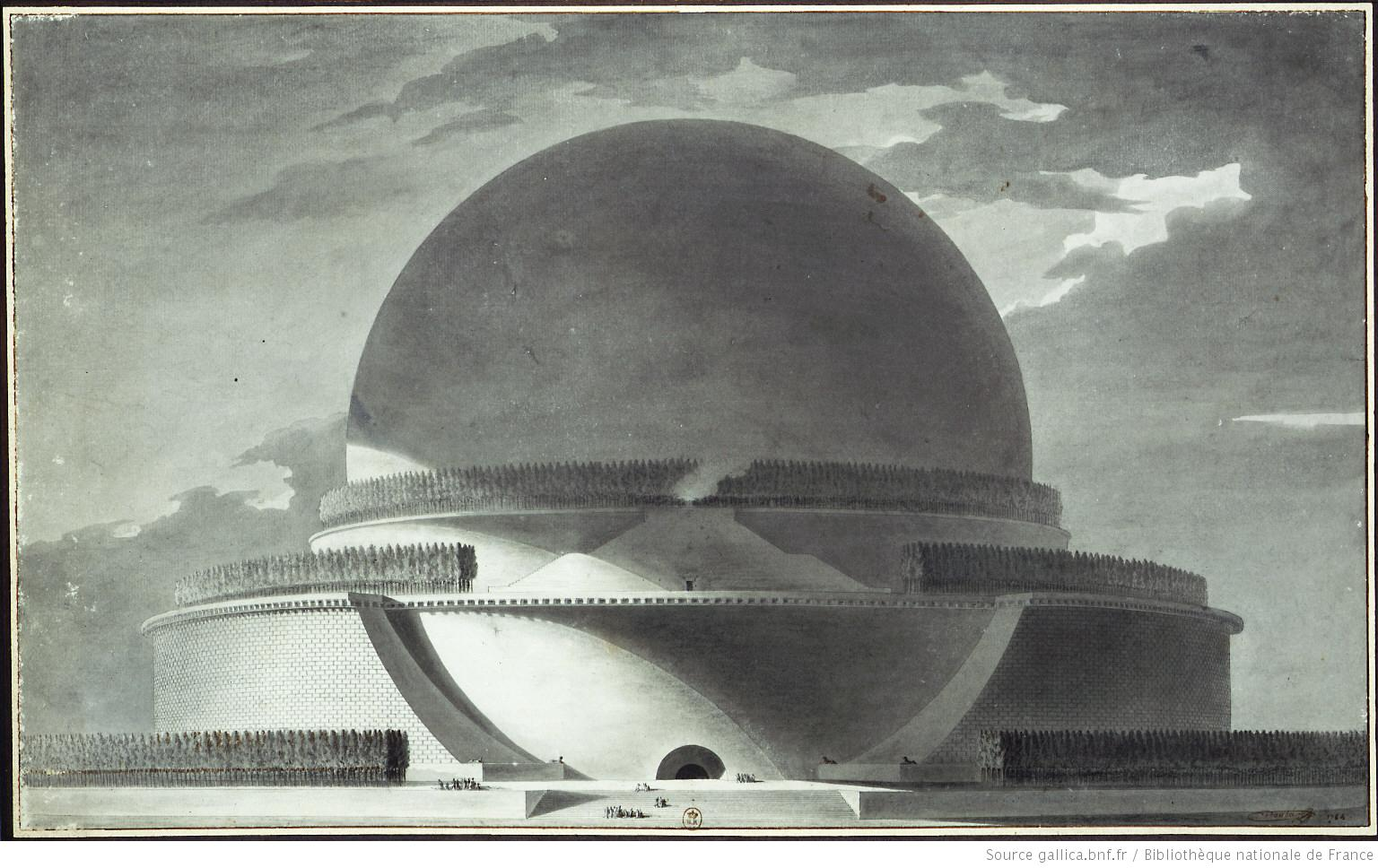
Update: As many readers guessed, this story is of course a prank for April Fools' day. Thanks to everyone who played along, and a particular thanks to the seven readers (we won't name any names!) who were convinced enough to email their expressions of interest. Your optimism and ambition are admirable, and we're glad that you were able to take the joke in good humor. To anyone who dared to believe this story and had their heart broken: we're sorry!
Last week, a little-known charity known as the Society for Atheistic Spirituality (SAS) announced a proposal which is sure to put them very much on the map: they plan to build Etienne-Louis Boullée's design for a Cenotaph for Newton. The cenotaph, designed in the late 18th century as part of Boullée's Architecture, essai sur l’art, is a sublime homage to the enlightenment thinking of Sir Isaac Newton, making it a perfect fit for the Society for Atheistic Spirituality's mission to "endorse a rational understanding of our universe without abandoning the sense of wonder that makes life worth living."
Though the plans are very much in their early stages - and in spite of the fact that the cenotaph was never really designed to be built in real life - the society is serious about their proposal, having earmarked a $500 million donation from a single donor, and are working to establish a "world class" team to realize the design. To find out more about their plan, ArchDaily spoke exclusively to the society's director Zara Thustra, their construction projects leader Sidney Syfus, and their half-billion dollar donor, Dr Pang Luz. Read on after the break for the full interview.






















































